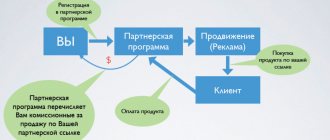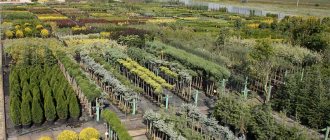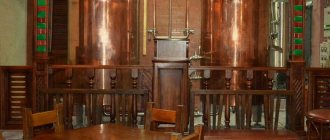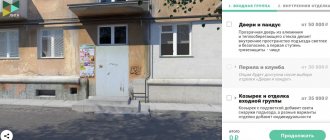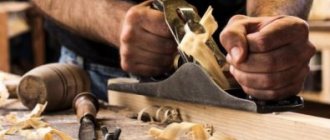Where do we start?
When learning a new topic, it is difficult to immediately know where to start. First of all, it is worth studying the question:
- Conduct regional market analysis.
- Find sales points.
- Find reputable suppliers of soil, fertilizers and the plants themselves.
- Consider the logistics coverage network.
Be prepared for the fact that you will be able to receive your first net profit no earlier than in 1-2 years. This is exactly the kind of business where time works for you. However, it is important to evaluate your financial and information base before starting a business. An entrepreneur who is inexperienced in this area is unlikely to achieve success. This requires some knowledge and patience.
Plant nurseries are divided into the following types depending on their focus:
- Fruit and berry plants.
- Ornamental plants.
Depending on the type of propagation, plants can be:
- Vegetative.
- Seed.
- Plants with a closed root system.
The flora is also divided depending on life expectancy:
- 1-3 years.
- 3-7 years.
- More than 7 years.
All these factors must be taken into account when selecting and distributing plants in the nursery. Some plants don't get along with each other. In addition, a small plant nursery business requires mandatory certification and licensing procedures. The entrepreneur must also obtain a conclusion that the nursery does not contain quarantine plants.
The next step is to obtain an inter-district (inter-regional or inter-regional) quarantine certificate. Step-by-step instructions for obtaining a license and certificate are freely available on the Internet. The certificate will give you the right to sell your products outside your own region. You can receive all the necessary documents only a couple of months after submitting the relevant application.
Description of the object
A plant nursery is created for the purpose of growing plants for their subsequent sale to the population, for landscaping gardens, local areas, park areas, city streets and all kinds of landscape solutions. Such enterprises grow various trees, shrubs, and perennial flowers.
There is always a demand for plants. Not every gardener decides to grow a bush from a “seed” to a fruit-bearing tree. This may take years. It is much easier to buy a grown perennial tree and within a couple of years harvest delicious fruits. In addition, landscaping the area with large trees (grown birch, spruce, etc.) is the only way to qualitatively decorate an alley or park area with perennial plantings. The same nurseries are engaged in the production of such planting material.
Product Description
Let’s say that the nursery will grow coniferous, ornamental, deciduous plants, flowers and shrubs:
- Sea buckthorn;
- Blueberry;
- Barberry;
- Hawthorn;
- Juniper;
- Fir (white, balsam, Korean);
- Euonymus;
- Spruce (blue, gray, common, etc.);
- Larch;
- Pine (mountain, Siberian, cedar, etc.);
- Spirea;
- Maple;
- Hydrangea.
In this case, the cost of one plant will be from 180 to 15,000 rubles, since difficult to grow and rare plants are not cheap. In addition, when setting the price, you need to take into account the age of the bushes. The most expensive in this case will be:
- Norway maple Golden Globe – from 13,000 rubles;
- pea cypress Squarrosa - from 15,000 rubles;
- horse chestnut Pyramidalis - from 10,500 rubles;
- gray spruce Konika – from 7,500 rub.
It is worth noting that in the first year the work will consist of growing cuttings, seedlings, rootstocks, and forming a varietal-mother garden, so you need to take into account that in the first year there will not be much profit from the enterprise.
In the first year, no more than 5 thousand seedlings can be sold, in the second year of work, approximately 10,000 pieces, in the third, already 15 thousand.
Purchase of seed material
To grow an expensive seedling, you need to get high-quality seed material. This also applies to strawberries and raspberries. Purchasing truly high-quality material for breeding is possible only in specialized nurseries, so it is necessary to look for direct outlets from them. It is important to remember that employees of these institutions are reluctant to make contact with gardeners and amateur agronomists, since they are their direct competitors, and business will not succeed if you help competitors.
You can buy material for sowing in specialized stores, but there is no guarantee that the seeds will be of high quality. Practice shows that in 50% of cases the buyer receives something completely different from what he needs. Therefore, the purchase of materials is a fundamental factor that allows you to make money on seedlings in the future or be left with nothing.
Step-by-step plan for opening a plant nursery
To locate the nursery, it is planned to rent a land plot of 5 hectares from the local municipal government. The rent will be 36,000 rubles per year. The land plot will be divided into the following departments:
- Root-seed garden;
- School of Seedlings;
- Mother plant of vegetatively propagated rootstocks;
- Mother-varietal garden;
- Mother plantings of berry species;
- Greenhouses for green cuttings;
- Vaccination workshop for winter vaccinations;
- Refrigerated storage for preserving cuttings;
- Landing areas;
- A digging area for temporary storage of planting material.
Also on the territory of the nursery there will be an administrative building and a utility block.
Marketing plan
Do not forget that the nursery is a seasonal business, since seedlings will be purchased in early spring or autumn. It is for this time that a product advertising company is being prepared, for this it is worth involving:
- advertising on the Internet;
- publications in the media;
- social networks;
- outdoor advertising.
In addition, it is worth considering cooperation with local authorities, since they often purchase a large number of plants and flowers for landscaping areas. Pay special attention to other buyers - these are gardening partnerships, wholesalers and individual entrepreneurs, owners of summer cottages.
Business plan: income and expenses
Since the volume of grown products will not yet be large, you will most likely have to sell it yourself on the local market, or you can sell it to sellers selling on the market at a certain percentage of remuneration.
In order to attract the attention of buyers, you can prepare a small leaflet on how to care for the plant with a photo of an adult plant.
As I have already noted, it is more advisable to grow conifers from cuttings of plants in your own garden, since seedlings of coniferous plants are expensive and it will take a long time for the purchased planting material to pay off.
Expenses
To grow 100 seedlings you will need:
- "Kornevin" is a root formation stimulator. The cost of one bag is approximately 25-30 rubles.* One bag weighing 4 grams will be enough for 50-60 cuttings.
- Used plastic bottles (water, drinks, etc.) - free.
- In order to increase the amount of planting material, it is a good idea to make a greenhouse in advance. To do this you will need film, arcs and four bars. The costs for a greenhouse are also minimal - a couple of meters of the cheapest film is about 100 rubles, but I think arcs and bars can be found in every household.
- Plastic containers or pots can be purchased with a volume of 1 liter for 15-25 rubles.
Total costs for rooting 100 cuttings:
- Kornevin: 2 pcs. x 30 rub. = 60 rub.
- Containers: 100 pcs. x 20 rub. = 2000 rub.
- Film: 2m x 50 rub. = 100 rub.
Total: 2160-2200 rub.
Financial plan
It is difficult to talk about specific amounts, since nurseries can be of different sizes. For example, let’s consider a greenhouse complex of 6 buildings and an area of 25 square meters, then you will have to spend the following amounts:
- wages for workers - 240,000 rubles;
- purchase and installation of greenhouses – 150,000 rubles;
- plot rental – 100,000 rubles.
In addition, you will have to purchase special equipment at the starting stage, so the investment will be approximately 500,000 rubles.
Let's look at sales:
- the markup for one plant is 150%;
- a two-year-old seedling of a rare fruit variety – 700 rubles (for older seedlings the price is higher);
- Coniferous trees can be sold for several thousand, but do not forget that it will take several years to grow before sale.
In addition, you must take into account the risks.
How much money do you need to open a private plant nursery?
According to the business plan, organizing a private plant nursery will require an investment of about 3,000,000 rubles:
- Site preparation – RUB 300,000.
- Construction of greenhouses for cuttings – 500,000 rubles.
- Construction of a refrigerated storage facility – RUB 200,000.
- Construction of an administrative building and utility buildings. block – 350,000 rub.
- Purchase of planting material – 550,000 rubles.
- Materials and household items inventory – 50,000 rub.
- Business registration and other org. expenses – 50,000 rub.
- Reserve fund – 1,000,000 rubles.
How to choose equipment for growing conifers
This business does not require any additional equipment. Building materials for the greenhouse are required: polycarbonate to cover the greenhouse, the frame is best made from a square profile made of galvanized steel, the foundation of the greenhouse is made of brick, or concrete is poured.
You also need to take care of heating the greenhouses. When planting seedlings, you can use a planting machine, but the best and most reliable method is to use a shovel. To weed beds with seedlings, hoes, hoes, and rippers are used.
Production plan
To make work easier, it is worth dividing the territory into zones. The largest area is allocated for growing plants yourself - these are greenhouses and beds. A separate trading platform is being formed. There is a separate demonstration area with examples of landscape design.
You should not organize a demonstration of plants in a greenhouse because:
- It is unpleasant to receive clients in a dirty room;
- the microclimate will be constantly disrupted;
- buyers can introduce third-party infection into the greenhouse.
Application questions
But even high-quality material needs to be able to be brought to fruition - to grow a truly worthwhile seedling. This process is associated with a number of difficulties:
- Weather. Frost can easily destroy a business, as can drought and hail. Therefore, you must monitor the weather forecast and, if necessary, take appropriate measures - water, wrap seedlings, trees.
- Diseases. You need to be able to identify and quickly neutralize plant diseases. Otherwise, you won’t be able to make money; all your efforts will be destroyed by parasites.
- Also, to obtain the desired result, it is necessary to properly feed bait, this is especially true when breeding coniferous trees. In the first year they require careful care.
- You need to have a set of garden tools: pruning shears, sprayer, hoe, rake, shovel. Without these simple devices, you won’t be able to earn money.
You may be interested in: 60 business ideas on how to make money at home
Accordingly, in order for a gardening business to generate income, it is necessary to constantly ensure that a seedling or shrub is not exposed to prolonged exposure to negative factors. To do this, you must spray, fertilize and graft trees on time.
Registration
So, we have decided on the choice of plants and the direction of the nursery. Next, you need to register your business yourself and obtain an individual tax number. The choice of ownership form depends on the scale and initial investment. For small areas (up to 1 hectare), we recommend registering an individual entrepreneur (the state fee will be 800 rubles). If you immediately aim to cover the entire region, it is better to choose an LLC (the state duty will be 4,000 rubles). The tax authority will immediately ask you to select an OKVED code. The following will suit you best:
- 01.1 “Growing annual crops.”
- 01.2 “Growing perennial crops.”
- 01.30 “Growing seedlings.”
In addition to the correct arrangement of plants, it is required to obtain a quarantine certificate, permission from the SES, Rospotrebnadzor and fire services. Only after these procedures can you begin to work.
Which taxation system to choose for opening a plant nursery
The organizational form of our nursery will be ordinary individual entrepreneurship. As a taxation system, it is planned to use the simplified taxation system (STS), 6% of the organization’s revenue.
Which OKVED ID should I indicate when registering?
It is necessary to indicate 01.1 for annual crops, 01.2 – for perennial crops, 01.3 – for seedlings.
What documents are needed to open a plant nursery?
To sell ornamental crops, the list of which does not include planting material, a number of certificates are required:
- a quality certificate is a paper that certifies that the planting properties of plants meet all state requirements;
- a varietal identification certificate is a paper that is issued after approbation of your varietal plantings. Confirms the purity of the variety of your plants;
- phytosanitary certificate - issued after passing phytosanitary licensing, during which plants are checked for diseases.
Do I need permission?
To organize a plant nursery, you need a business permit, and you may also need a separate document for the construction of premises. For the newly created premises, you will also need an inspection certificate from the sanitation station and the fire control service.
Paperwork
Trade in seedlings requires official registration of the company. To do this, it is better to choose one of the acceptable forms:
- Peasant farm - peasant farm. You will have to rent or buy at least 1 hectare of land, which is more profitable for large volumes. In this case, documents of all co-owners of the business, an application, a decision on the establishment of the business are submitted, and the state duty is paid. This form of activity involves the creation of a large project and access to wholesale supplies of planting material.
- Private subsidiary plot – personal subsidiary plot. A better option for small entrepreneurs. In this case, there are tax benefits, but there are also restrictions on the quantity of goods sold per year and the opportunity to hire additional staff. Usually in such farms people get by with their families.
In both cases, you must indicate the correct OKVED code. This is 01.30, allowing the cultivation of any plant specimens for sale - cuttings, seedlings, saplings, seedlings, etc. Also indicate the appropriate code for retail or wholesale trade.
Work area
To begin with, you should choose a not very large plot, the area of which can be from 5 to 10 hectares. It is this territory that you can cultivate yourself with the help of your family members. At first, you will need to have a good understanding of the peculiarities of growing various plants, decide on the final assortment, study the needs of customers, and develop a client base.
In addition, buying a small plot of land is more economical, since it can be found within the city, which will significantly save money on transportation and delivery. It is better to purchase property so as not to depend on the landlord.
But the choice of site does not only depend on this; it is important to consider fertile land that will correspond to the types of plants that are planned to be grown. Another important point is the presence of communications or a reservoir in close proximity to the nursery - without water, the seedlings will dry out. In addition, you need to consider:
- location - not all plants can withstand low areas;
- location of bottom waters - close groundwater causes great harm to some crops;
- availability of access roads.
Important! It is also worth taking into account the presence of a fertile layer on the surface of the earth; if it is not of adequate quality, and the seedlings grow weak, then you will have to spend money on improving the quality of the soil.
Diseases and pests of coniferous species
It is believed that coniferous crops are less susceptible to disease risk than fruit crops. Unfortunately, this is not the case: even mature pine, spruce and fir trees can suffer from various infections, and for seedlings the danger increases many times over. When growing Christmas trees at home, copper sulfate and Bordeaux mixture are used for treatment, and in industrial nurseries, systemic fungicides are used. What threatens plants:
- A real chute. It appears in the spring, covering the needles with yellow dots. Later they grow and become brown. The needles die and fall off;
- Ordinary shutte. Infected needles turn yellow and then brown. Next, black dots of fungi form on it, causing its death;
- Snow shutte. It develops mainly on young pines. Their needles become red, and as the disease progresses they turn gray and crumble;
- Cones rust. Covers the inner surfaces of the cones with a dusty brown coating. They become infertile, and the shoots of the plant become bent;
- Pine spinner. Causes bending of branches and death of the top. Seedlings become ugly, and the bark of mature trees cracks;
- Pine needle rust. Forms yellow bubbles on the needles. They increase in size, after which the needles fall off and the tree stops growing;
- Resin cancer. It appears as flaky and peeling bark. Resin begins to ooze from the ulcers, forming large growths;
- Gray mold. It looks like a gray web covering the needles. As the disease develops, it affects the roots, causing them to rot and die;
- Fusarium. It infects the roots and then spreads through the vessels to the rest of the plant. Dark rings of mycelium are visible on sections of shoots;
- Vascular bacteriosis. Causes tarnishing and needle drop. Unlike fusarium, it is not detected on sections of branches.
Among the numerous pests there are also those who like to feast on young shoots and buds of coniferous plants. They are unlikely to destroy an adult tree, but they can easily destroy a two-year-old seedling. Therefore, when the first representatives of the insects listed below are detected, it is necessary to treat the plantings with pesticides:
- Bark beetle Family of beetles up to 10 mm long. They and their larvae gnaw winding passages in the cambium, reaching the wood. Small passage holes are visible on the trunk;
- Spider mite. Insect 0.2 mm long. It feeds on plant sap, leaving light spots at the bite sites. Identified by the web covering the needles;
- Sawfly. A family of flies that resemble bees in appearance. Their larvae eat buds and young shoots, causing the branches to dry out;
- Shield. A family of insects that settle on trunks under flat or convex growths up to 3 mm long. They feed on plant sap;
- Hermes. An insect from the genus of aphids. Some species form galls on needles at the beginning of summer, others at the end. They are detected by the white fluff covering the needles;
- Green spruce aphid. It has a body up to 2 mm long. Its saliva is poisonous to plants, and therefore, where insects feed, the needles turn yellow and fall off;
- Winter needletail. A butterfly with red wings 15–20 mm long. Its caterpillars eat young shoots and buds of pine and spruce;
- Arborvitae moth. A butterfly with striped white and brown wings. Its larvae gnaw tunnels in young shoots and needles.
Greenhouse
In order not to depend on the season, a novice entrepreneur needs to build a greenhouse. The most budget option is to build a homemade greenhouse. However, this requires a lot of effort and time. Therefore, many people prefer prefabricated structures. It can be installed in a day. One square meter costs about 2 thousand rubles.
One frame is not enough in winter. It is necessary to think through the heating and land reclamation system in detail. The air temperature should be maintained at 16 °C all year round, and up to 8 °C at night. There are 2 ways to maintain temperature: technically (special equipment) and naturally (greenhouse effect). Depending on the size, a high-quality greenhouse will require from 100 thousand rubles.
Staff
The number of workers is determined based on the area that will have to be cultivated - the more acres of land owned, the more people will be needed to provide proper care to the seedlings.
If the plot is small, then you can try to process it yourself, involving relatives - then the business will be a family one. If the area is large, then you will have to hire workers in the amount of 5-7 people, in addition to this you will need:
- technologist;
- accountant;
- drivers for equipment;
- manager, although you can do this yourself.
Of course, it is worth choosing staff who know how to work with plants. It is also in the interests of the entrepreneur to constantly improve the qualifications of employees - to invite specialists to give thematic lectures, conduct trainings and courses.
On average, you need to set aside approximately 67 thousand rubles a month from your profit to pay for labor.
Necessary machinery and equipment
For a large nursery you need an appropriate set of equipment:
- machines for collecting and planting seedlings;
- watering machines;
- soil cultivation equipment.
It is worth considering that a pruning machine and a transplant of mature trees may be needed - it all depends on the direction of the nursery. You should also expect that you will have to buy a sprayer and products for treating crops against pests and diseases.
When purchasing equipment, it is better not to save money - it should come with a guarantee from reputable manufacturers. In addition, you will have to purchase several greenhouses, which will be either simple or heated.
The structure can be heated in several ways:
- natural;
- biofuel;
- technological.
Natural heating is sunlight, but it is worth considering the fact that in many regions there is very little of it in the spring.
When it comes to biofuels, there are a lot of options:
- manure;
- compost;
- straw;
- humus.
The last heating option, considered the most expensive, is gas or electric heating. But when using it, you can start planting seedlings much earlier, without fear of late frosts and natural disasters.
The average cost of such a structure is 1,000 rubles per square meter of area, plus equipment, irrigation system, materials, fertilizing and fertilizers. According to preliminary estimates, up to 300,000 rubles can be spent on structures.
A greenhouse is the most important equipment for a nursery, so you should not skimp on these structures.
Criteria for choosing equipment for an ornamental plant nursery.
In this article, I want to share with my colleagues, as well as all interested parties, about the technology used in our nursery and the main criteria for choosing this particular technology, as well as the pros and cons of our choice identified during operation.
First, a little about the nursery (this is necessary to justify the choice of a particular machine) The total area is 55 hectares, 15 hectares have been developed, of which 3 hectares are under coniferous trees from the 2nd school, 2 hectares are under coniferous trees from S-3 and 10 hectares under trees 200 -250 trunk diameter 3-5 cm. 40 hectares are systematically prepared for planting and replanting.
So, preparation of new fields and treatment of row spacing in planting deciduous trees.
For this purpose, we purchased the most common MTZ-82 (Belarus). The attached equipment includes a 3-furrow plow, a 2.4-meter disc harrow, and we are planning to purchase a mounted fan sprayer.
Yes, I’ll make a reservation right away - we buy only new equipment that we purchase for working in the fields, the first 2 years of using used MTZ showed that most of the time during which we needed the tractor for work, it was standing for repairs, and new equipment, although orders of magnitude more expensive, is cheaper to operate and ultimately more productive.
So, why MTZ? This tractor is used in the most difficult operating conditions - preparing new, neglected fields for planting. Since this process lasts more than one year, the load on the equipment is very large. Firstly, Belarus is one of the cheapest tractors in its class (when communicating with the Poles, they have recently been very keenly interested in this tractor, since it is several times cheaper than its Western counterparts - I’m not talking about quality, since I already mentioned it - this a tractor for heavy work and destroying expensive equipment on swampy fields is a bit of a shame, but with our volumes the inconvenience can be tolerated). The second reason is the availability and low cost of spare parts, as well as the possibility of repairs in the field “on the knee”.
Spare parts for this tractor can be found in any village in the sheds of thrifty villagers, and if necessary, these same villagers will repair the tractor for a reasonable fee. The situation is the same with tractor drivers - all villagers know how to drive, and when parked, you can somehow get a sober tractor driver by hook or by crook. Also, since we already have this tractor, we use it to cultivate row spacing in deciduous tree plantings. Of course, due to its size, it is necessary to make wide (3 meters) row spacing, but today this is more profitable than having a separate tractor for cultivation. Well, there’s no need to talk about the plow - this is the best option for this tractor. Sprayer – Why mounted? This option significantly reduces the turning radius at the end of the rows - this is the only reason. The downside is that the tank is not very spacious, but given our volume, this is not very significant. That's all with MTZ.
To process the row spacing of coniferous plants in the 2nd school, we use the Finnish tractor AVANT 528. This is a small tractor, 1.2 meters wide, quite passable. Due to the articulated frame, it is very maneuverable. These dimensions and the structure of the frame allow row spacing to be 1.8-2 meters, which significantly saves space and, accordingly, time for processing these row spacings. Also, this tractor is actively used by us when transporting all sorts of things - attaching a regular car trailer, loading, unloading, transporting plants - there are flying forks and many other bells and whistles. That is, this tractor is quite versatile for a nursery and does not sit idle all season. However, it has several disadvantages - the first is the hydraulic drive of the cultivator and other mechanisms - rather weak, the PTO (Power Take Off Shaft) is much more efficient. And the second - the most significant reason for which I would no longer buy such equipment - are representatives of the plant in Russia. This is a real problem. Through them, not only had I paid for the tractor, I could not receive it for almost a month (although they said, pay, everything is in stock), but since then I have not been able to buy a single part for it through these dealers. I waited for months for a response to a request for parts, and in the end I had to buy everything (even consumables) through dealers in Poland or Germany. In general, this is indeed a problem. So I recommend everyone to look for other equipment for such work. We cultivate the row spacing in the rows planted from S-3 using hand cultivators. This allows you to plant plants at a distance of 1 meter, and with a good cultivator and a lazy worker, processing 2 hectares takes 2 days. For these purposes, we used the Grillo 181 cultivator. A good, reliable cultivator, it has been working for 2 seasons - it cultivates, carries a trailer, spare parts are available in Moscow, in general, everything is good, except for the price - today it is approximately 360,000 rubles (for comparison, Belarus 82 – 500,000 rubles) So, in the future, we decided to also abandon this technique and for the next season we took the Husgvarna CR T81 for testing. According to the recommendations - good, for the price - also (50,000 rubles), but in operation - we'll see.
For digging up and replanting trees, we chose German equipment from Optimal Opitz. We have equipment for digging 140 cm clods and are now purchasing equipment for 880 cm clods. This is an attachment for tractors. It is for this reason that we chose it. Digging up and replanting plants takes a short period of time, and the rest of the time the equipment is idle and if it goes with the tractor, then, accordingly, the tractor is also idle. (this applies to Damkon Pazzagla and similar machines). That is, I’m not saying that other machines are worse - no, maybe better, I’m only talking about the versatility of using a load-bearing tractor. We put the large hitch on the JCB 4CX tractor, and the rest of the time we use it for construction work in the nursery, since there are a lot of them in young nurseries, and we plan to install the small one on the AVANT, for which it was purchased, but about using it at another time , I wrote.
These are the types of equipment we use for our work, and today, given our size, it is quite enough for us.
I emphasize once again that all of the above is purely my own opinion, obtained in the process of working with this technique.
Business: growing seedlings for sale
The seedling business is quite simple, and at the same time quite profitable. The only significant drawback is seasonality. Naturally, you will not be able to have a stable income all year round from growing seedlings, so you need to take this into account in financial terms in advance.
What seedlings to grow?
If you are not yet experienced enough in gardening or are just starting this activity, then you need to start with those plants that are the least demanding to care for. The ease of plant propagation will also play a big role. To begin with, we recommend trying to work with raspberries, gooseberries and currants.
From fruit trees, it is profitable to grow seedlings for cherries, pears, apples, apricots, and peach. But to work with such plants you need at least minimal experience in gardening. And if you are attracted to flowers, then think about growing rose seedlings for sale.
Now let's take a closer look at each type of plant.
Growing berry seedlings for sale
All berry plants are propagated by cuttings. A cutting is a separate part of a plant shoot, or its root. You need to separate the cutting from the plant very carefully so as not to damage its structure. Cuttings of most berry plants are taken throughout the year. A freshly cut cutting must be placed in water for a very short time, and then planted in a container and sent to a greenhouse, where it will develop.
In the greenhouse, you need to regularly water the planted cuttings and spray them if necessary. At the beginning of the spring season, cuttings that have already turned into seedlings can be sent for sale. We’ll talk about where and to whom you can sell seedlings a little later.
Growing fruit seedlings for sale
If you want to work with fruit trees, you will have to master grafting skills. This is a little more complicated than the cuttings discussed above. You will need seeds from the type of tree you are planning to propagate. For example, this is a pear. Around mid-winter, we take the seeds and place them in a box filled with soil and sawdust. We place the box in a room with a temperature of about 5 degrees Celsius for one week. After this, we water the ground and place the box in another place, the temperature in which will be slightly above zero degrees.
At the very beginning of spring, seeds can be planted in the ground. As soon as the first shoots appear, do not forget to water and fertilize them. Plant the seeds with the expectation that there should be a distance of more than one meter between the sprouts.
A year later, next spring, the seedlings can be grafted. And next fall you will already receive a product ready for sale. As you already understood, to start selling fruit seedlings, you will need to wait two whole years. And not just wait, but all this time diligently care for your tree sprouts. Therefore, business in fruit tree seedlings is considered quite difficult for unprepared people.
Growing pine trees for sale
One of the most popular types of seedlings are trees such as cedar, pine and spruce. Growing them is also not easy for a novice gardener. But the demand for them is very high, so don’t waste time and immediately start learning the science of growing pine trees. The oldest trees that you manage to grow, you can sell for a very high price. For example, a cedar or pine tree three meters high can be sold for $200-300. And sometimes the cost of such trees can reach 500 dollars or more.
If you are interested in growing pine trees for sale, then you will need a considerable area - about 1.5-2 hectares of land. This is the minimum required to really make money from this. This area is enough to grow 1000 seedlings. And your first sales will appear only after three to four years of caring for the plants.
Growing rose seedlings for sale
Roses are the most favorite flowers of many people. This is a kind of “floral” classic that will never lose its relevance. Roses of any kind are very easy to sell for almost any money. Therefore, if you decide to grow seedlings of these particular flowers, you will make the right choice.
There are many types of rose propagation, but the most convenient and common of them is cuttings. First you need to cut the rose cuttings so that each of them has several leaves with buds. The best cuttings are obtained from the middle part of the stem. The resulting cuttings should be immediately placed in a container with cool water.
Next we need to prepare the soil for planting the cuttings. Choose a place on your site so that it is convenient for you to care for your plants. This should be an area open to the sun. If your climate is too hot, then you should plant the cuttings where they will be protected by a little shade. The soil in which the cuttings will be planted must first be fertilized.
Each planting hole must be at least 50 centimeters from the other. Pour a little water into the hole, insert the cutting and bury it almost completely in the ground. Each cutting should be covered with a glass jar on top and the soil should be thoroughly fertilized again. If you diligently water and fertilize the soil, the cuttings will soon delight you with their first shoots.
We count profits
The main question in any business is: is it profitable? A business idea provides an opportunity to earn good money. The cost of production consists of the cost of seedlings, costs of heating, land reclamation, fertilizer and wages of workers. About 40-50 thousand rubles will be spent on wages per month along with deductions. For watering and heating you will need from 5 thousand rubles per month. You will have to spend about 10 thousand rubles monthly on fertilizers.
The markup will be about 150%. Thus, an adult two-year-old seedling will cost about 750 rubles. The cost of a three-year-old plant starts from 4.5 thousand rubles. Profitability can reach 50%.
Calculation of project performance indicators
The final stage of the business plan is the calculation of the main performance indicators of the project. Fixed annual expenses
- Rent – 36,000 rub.
- Salary – 1,680,000 rubles.
- Insurance deductions – 504,000 rubles.
- Advertising – 200,000 rub.
- Fertilizers, fertilizers, plant treatment products – RUB 300,000.
- Other expenses – 200,000 rubles.
Total – RUB 3,020,000.
How much can you earn from a plant nursery?
- First year of work: 2,000,000 – 3,020,000 = - 1,020,000 rubles.
- Second year of work: 4,000,000 – 3,020,000 = 980,000 rubles.
- Third year of work: 6,000,000 – 3,020,000 = 2,980,000 rubles.
The return on investment, therefore, will come only in the fourth year of operation of the nursery, when the organization will recover the losses of the first year of operation and begin selling two or three year old seedlings at reasonable prices.
Growing technology
Thanks to the purchased equipment, you will be able to grow various plants on the site, both single and perennial.
- The first option is good for those who already have potential clients for purchasing annual plants, which will help them quickly sell without long-term care.
- In the second case, in the first year you will suffer significant losses, but in subsequent years you will be able to establish cultivation and supplies, making a considerable profit.
Important: if you intend to grow coniferous trees, then the planting hole should be twice the size of the root system. It is best to grow using various growth regulators; for survival, the substance “Zircon” is used by dipping the roots of seedlings into the composition. For greatest effectiveness, you can use anti-stress adaptogens.
Advantages and disadvantages
Opening a plant nursery has its pros and cons.
Pros:
- High profitability and relatively low cost.
- Opportunity to start a business on your own personal plot.
- Little competition.
Minuses:
- You can get your first real money only after 1-2 years of hard work.
- Quite a long payback period (2-3 years).
- Great influence of external factors (soil, climate, weather conditions).
General situation in the CIS market
Before starting to draw up a business plan, it is vital for every entrepreneur to conduct a detailed analysis of the state of not only the regional, but also the state and international market.
Today, in countries with the most developed horticultural and floriculture businesses, such as France, Great Britain and Spain, there are a total of more than 15,000 different nurseries, greenhouses and estates, most of which were established more than 100 years ago.
At the same time, in Russia, despite the rapid, almost 20% growth rate of business, there are officially only 354 such nurseries.
At the same time, taking into account the diversity of natural and climatic conditions, population and total area, according to experts, for all CIS countries the total number of such nurseries should be at least 10,000 units.
Market analysis scheme
When assessing the state of the domestic market, it is recommended to pay attention to the so-called. private “homestead nurseries”, which make up the bulk of modern Russian nurseries.
Important: the group of potential nursery growers may include completely different people, but the largest part of it are amateur gardeners. According to rough estimates, almost 2/3 of all nurseries are created by people without special education. Such amateurs, having studied special literature, learned to grow and propagate seedlings on their own; many of them earn a living in this way, while enjoying considerable prestige among partners and buyers. When organizing your own enterprise, you need to take into account such amateurs - they can become not only a source of the first seedlings, but also important partners for future cooperation, in other cases - extremely experienced and high-quality employees of your company.
Advantages and disadvantages of the project
To understand whether the chosen direction is suitable for you or not, it is recommended to consider the main advantages and disadvantages of the business. In our article we will make such a comparison in the simplest way - we will weigh all the pros and cons, arranging the pros and cons in the table below.
| Advantages | Flaws |
| Despite the wide variety of climatic zones, a plant nursery can be built in almost any region of the temperate zone | Such a business has a pronounced seasonal nature - peak sales occur in autumn and spring, and in winter one should expect large losses |
| The culture of selection and breeding of new species is widely developed throughout the post-Soviet space | General desolation and “conservation” of garden infrastructure |
| The main market segment is concentrated in small private backyard nurseries | Often supply and demand are in balance, so efforts must be made to increase sales |
| Species of ornamental plants unique for the CIS are perfect for the market of near and far abroad | Most of these sales are “direct”, so for the success of the business it is worth hiring an experienced marketer |
| The retail markup on seedlings, depending on the type and rarity of the plant, ranges from 150 to 300% | Growing competitive plants requires constant control over the nursery |
If for you the advantages significantly outweigh the disadvantages, and you are seriously interested in the business, then we strongly recommend that you proceed directly to drawing up a business plan.
Eventually
A business idea for opening a plant nursery is ideal for summer residents and gardeners. Without specific knowledge, it will be difficult to achieve success in this field. Even despite the greenhouse conditions, business has its seasonality. Be prepared to invest throughout the year and receive a profit once per season. But Confucius also said: “Do what you love, and you will never have to work a day in your life.”
Sources
- https://zhazhda.biz/idea/kak-otkryt-pitomnik-rastenij
- https://abcbiznes.ru/sample-business-plans/570-biznes-plan-pitomnika-rasteniy.html
- https://xn—-8sbebdgd0blkrk1oe.xn--p1ai/biznes-plan/selhoz/kak-otkryt-pitomnik-rastenij.html
- https://www.investngo.ru/kak-otkryt-pitomnik-rastenij/
[collapse]

